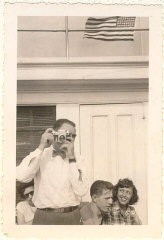
Photo
Browse an alphabetical list of photographs. These historical images portray people, places, and events before, during, and after World War II and the Holocaust.
<< Previous | Displaying results 31-40 of 55 for "Photo" | Next >>
-
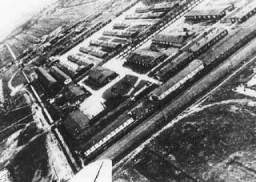
-
Newspaper from a displaced persons camp
PhotoFront page of a newspaper from Landsberg displaced persons camp. Germany, November 15, 1945.
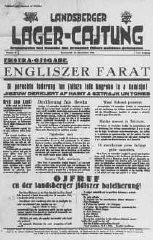
-
Newspaper headlines about the sentences given at the International Military Tribunal
PhotoAn American correspondent reads a special edition of the Nürnberger newspaper reporting the sentences handed down by the International Military Tribunal. Nuremberg, Germany, October 1, 1946.
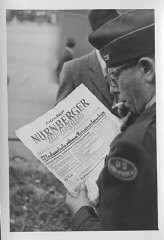
-
Nomadic Roma (Gypsies)
PhotoA family of nomadic Roma (Gypsies) in front of their wagon. Czechoslovakia, 1939.

-
Norbert Yasharoff wearing the compulsory star of David
PhotoNorbert Yasharoff, a Bulgarian Jew, wearing the compulsory star of David. His young sister was not then required to wear a star. Pleven, Bulgaria, between May and September 1943.
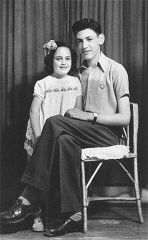
-
Norman and Amalie Salsitz with their first grandchild
PhotoNorman and Amalie Salsitz with their first grandchild, Dustin. March 11, 1983. With the end of World War II and collapse of the Nazi regime, survivors of the Holocaust faced the daunting task of rebuilding their lives. With little in the way of financial resources and few, if any, surviving family members, most eventually emigrated from Europe to start their lives again. Between 1945 and 1952, more than 80,000 Holocaust survivors immigrated to the United States. Norman was one of them.
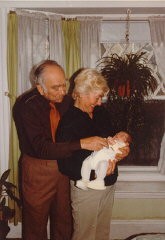
-
Norman Salsitz and Amalie Petranka shortly after they met
PhotoNorman Salsitz and Amalie Petranka shortly after they met (under their assumed identities of, respectively, Felicja Milaszewska and Tadeusz Zaleski). Krakow, Poland, March 15, 1945. With the end of World War II and collapse of the Nazi regime, survivors of the Holocaust faced the daunting task of rebuilding their lives. With little in the way of financial resources and few, if any, surviving family members, most eventually emigrated from Europe to start their lives again. Between 1945 and 1952, more than…

-
Norman Salsitz holds a photograph of himself and Amalie
PhotoNorman Salsitz holds a photograph of himself and Amalie from 1945. 2004. With the end of World War II and collapse of the Nazi regime, survivors of the Holocaust faced the daunting task of rebuilding their lives. With little in the way of financial resources and few, if any, surviving family members, most eventually emigrated from Europe to start their lives again. Between 1945 and 1952, more than 80,000 Holocaust survivors immigrated to the United States. Norman was one of them.
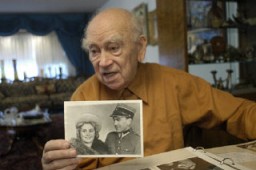
-
Norman Salsitz holds a photograph of his wife and daughter
PhotoNorman Salsitz holds a photograph of his wife, Amalie, and daughter, Esther. 2004. With the end of World War II and collapse of the Nazi regime, survivors of the Holocaust faced the daunting task of rebuilding their lives. With little in the way of financial resources and few, if any, surviving family members, most eventually emigrated from Europe to start their lives again. Between 1945 and 1952, more than 80,000 Holocaust survivors immigrated to the United States. Norman was one of them.
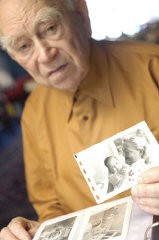
-
Norman Salsitz in the United States
PhotoNorman (with camera) in the United States. August 1948. With the end of World War II and collapse of the Nazi regime, survivors of the Holocaust faced the daunting task of rebuilding their lives. With little in the way of financial resources and few, if any, surviving family members, most eventually emigrated from Europe to start their lives again. Between 1945 and 1952, more than 80,000 Holocaust survivors immigrated to the United States. Norman was one of them.
